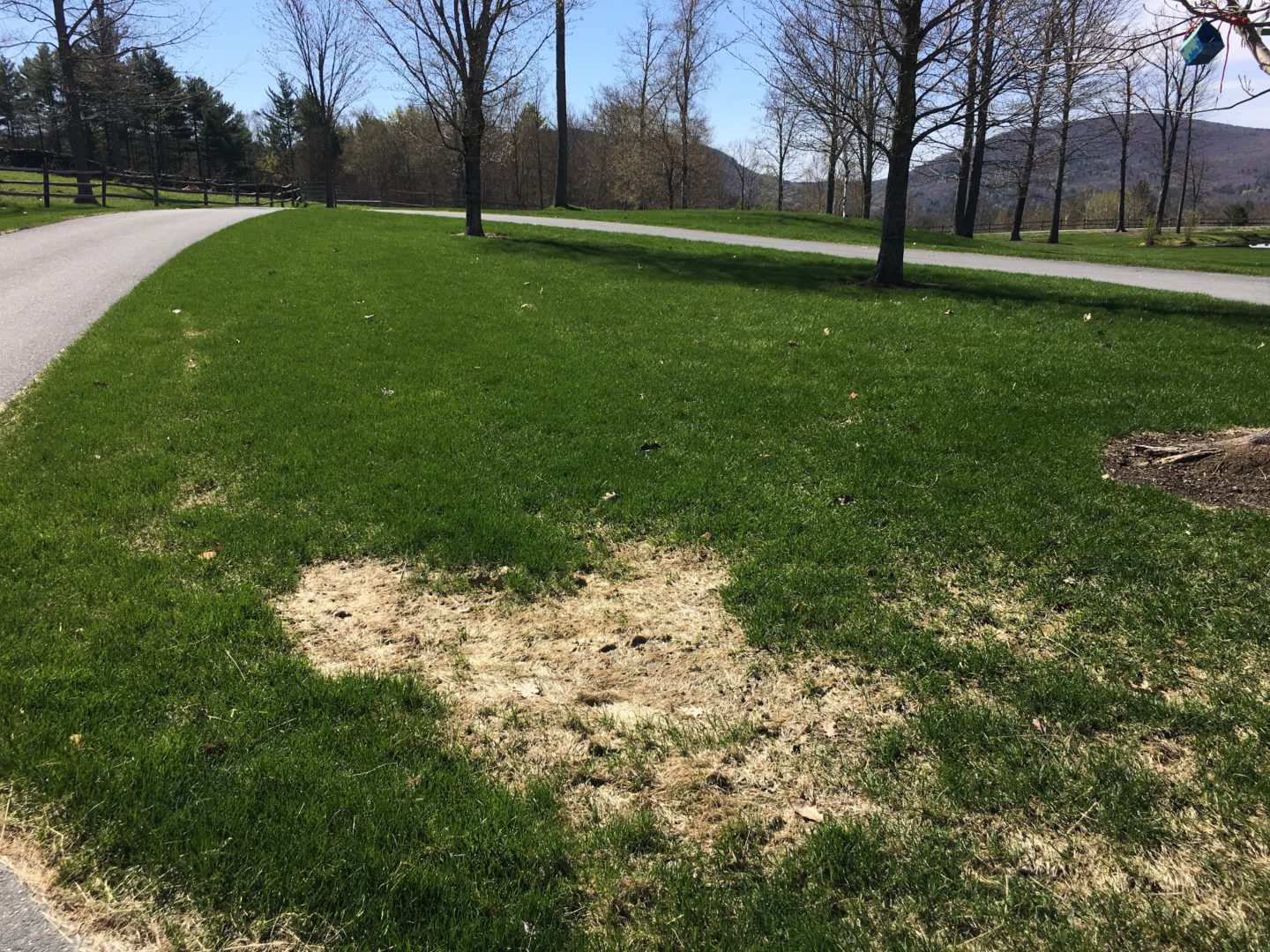Winter lawn injury is sporadic but common this spring. The stage was set last fall with an extremely wet autumn that saturated the soil. November’s cold hit fast and hard with temperatures down into the teens; there was no adjustment period for lawns or shrubs. Worse yet, there was no snow cover to insulate and protect lawns. This one-two punch set up most lawns and landscapes for a difficult winter.
Fast forward to April of 2019 with its cold wet weather lasting for weeks upon weeks with temperatures in the 30s. These were ideal conditions for snow mold and worse yet, it kept the already soggy soil completely saturated, drowning turf roots and hindering normal recovery typically found with warmer and drier spring soil. These conditions have led to lawns experiencing real visible damage in late April and early May.
Standing water, snow banks, endless cold drizzle and rain have hindered grass from growing. Cold soil has slowed lawns from breaking winter dormancy and trying to outgrow the assault that has occurred. Snow mold has further complicated life for lawns by inflicting more harm. What can be done?
The best thing anyone can do is wait as spring turns into early summer with the inevitable warmer and hopefully drier weather. Only with warmer soils, into the 50s and 60s, can grass really start to aggressively grow in an attempt to put up new grass blades, make food for itself, and try to not thin out and die. As a homeowner, you can lightly rake up any matted areas once dry, being careful not to tear and inflict more harm by dislodging plants that are already weak. Aggressive dethatching will only do more harm than good by tearing up/shredding grass already damaged and perhaps on the edge of demise.
Your lawn should look its best by early June, in most locations. Any significant damage worthy of repair can be addressed shortly before or after Memorial Day weekend. Spring aeration and overseeding can also be beneficial, especially with lawns that thinned due to standing water, ice, or snow banks. However, dead patches will likely need to be loamed and seeded.
Patience (and better weather!) are your best friends over the upcoming weeks. Wait and then make a decision regarding seeding repairs at the end of this month.


